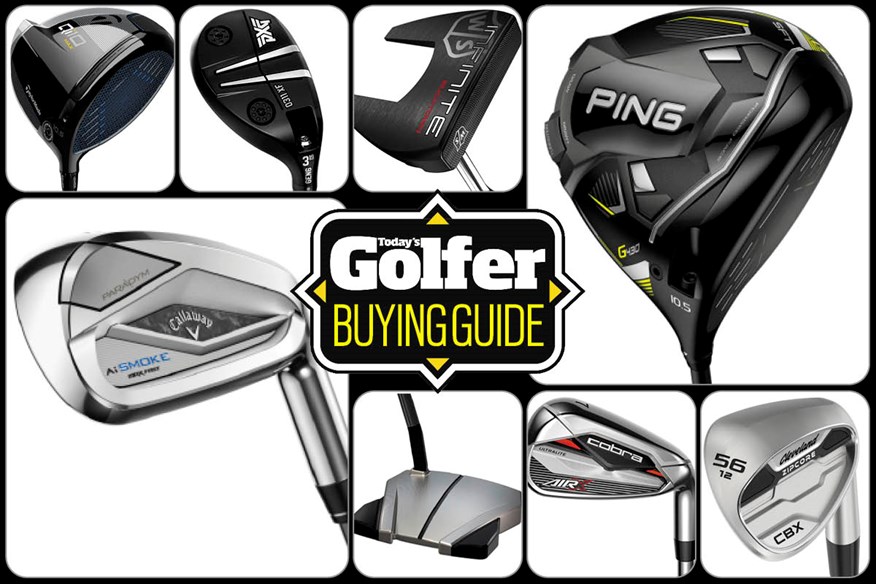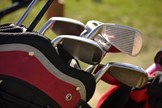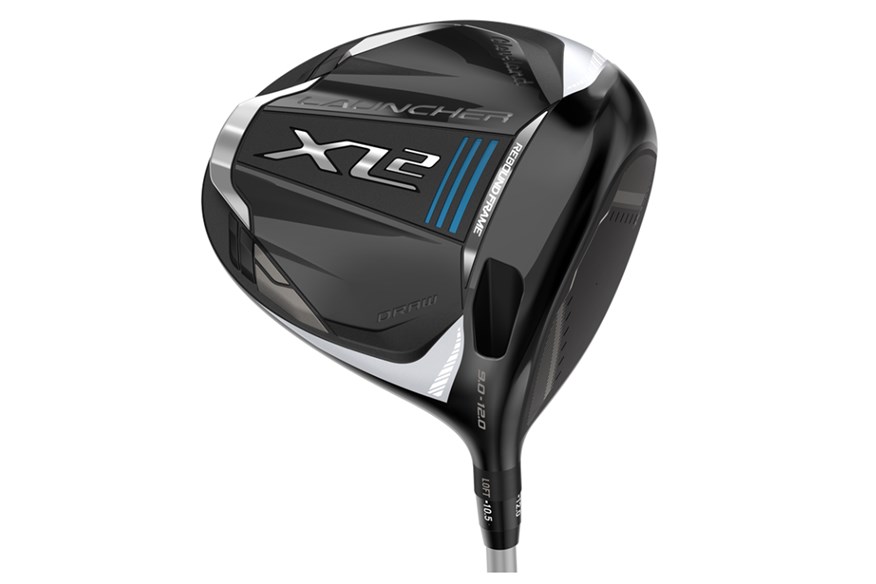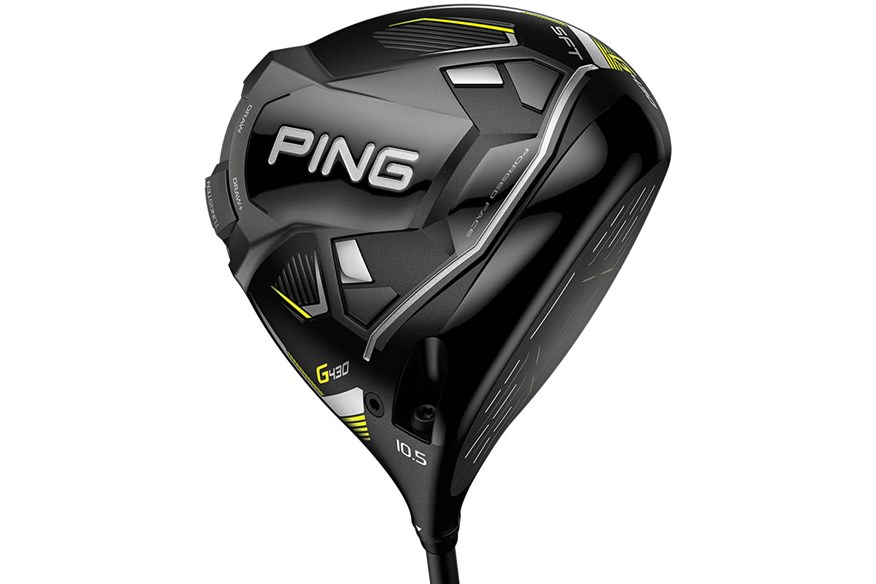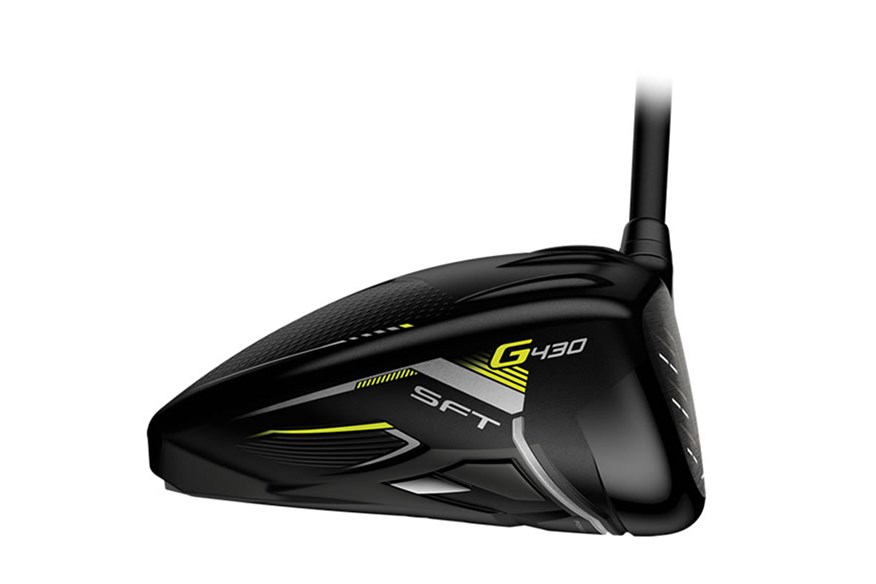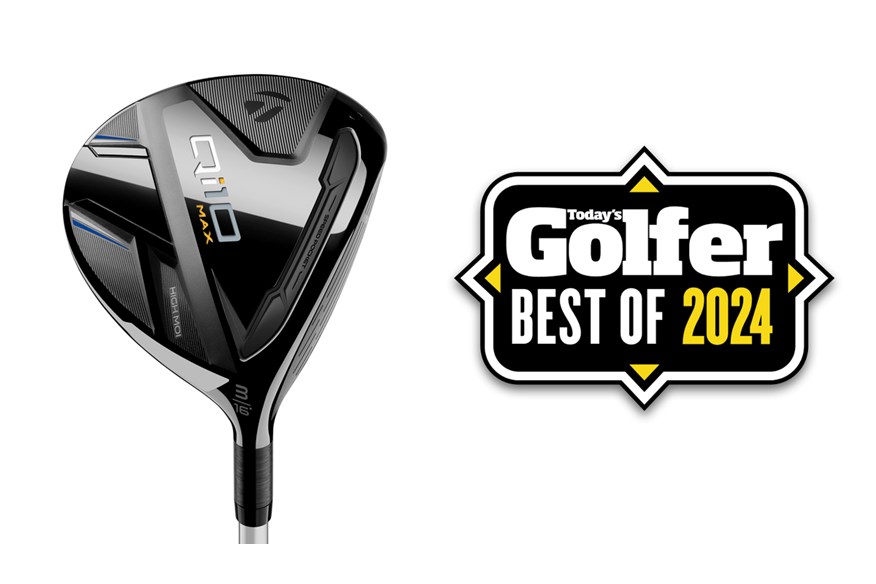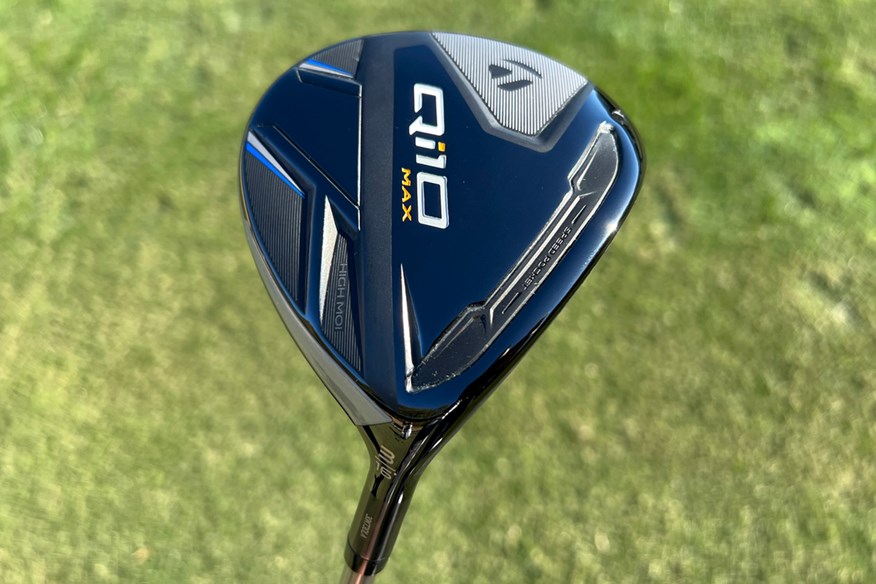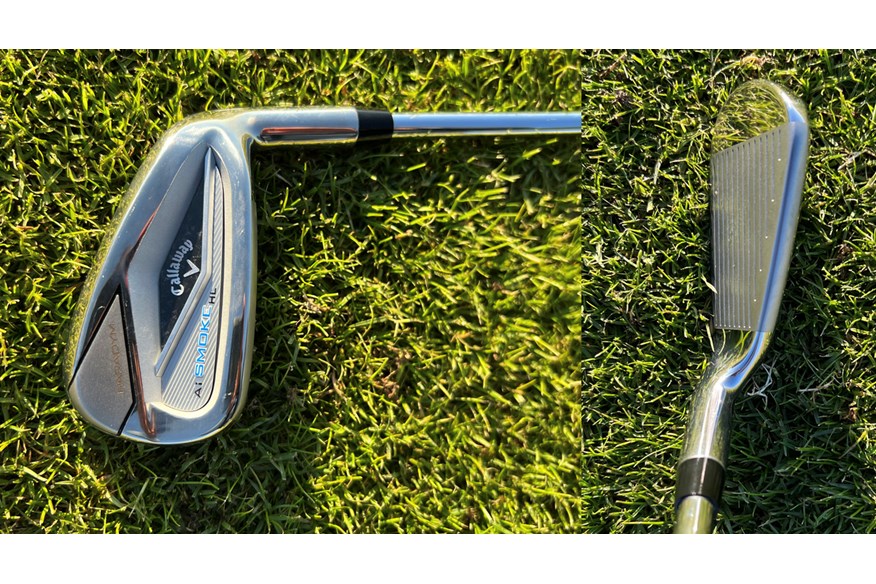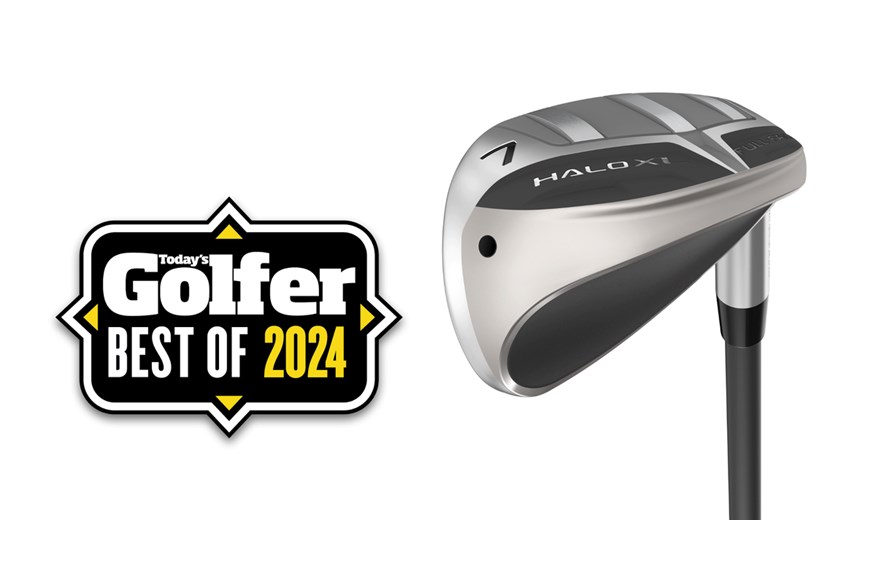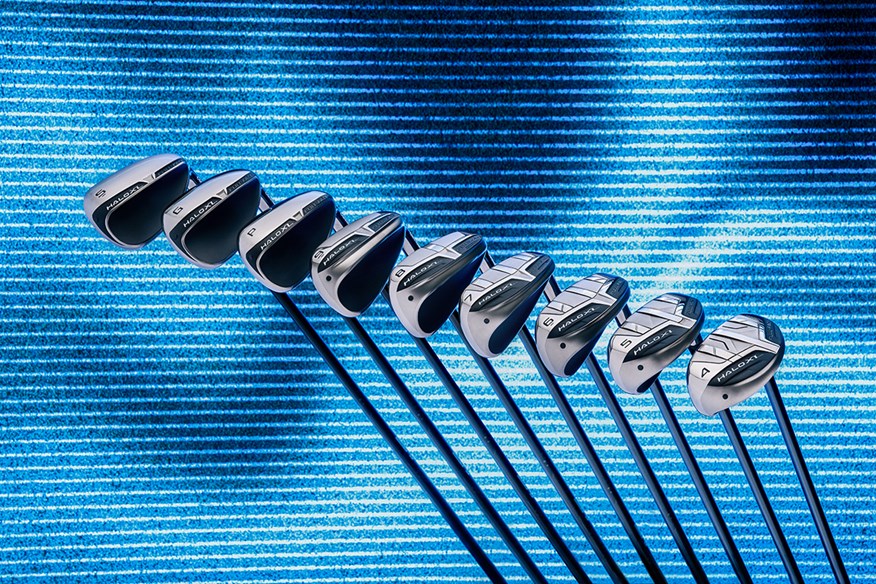The Best Beginner Clubs to get you started in Golf for 2025!
Last updated:
Make sure your starting point in golf is the best it can be by navigating the difficulties of selecting the right beginners’ clubs for you with our handy guide.
Choosing your first-ever golf clubs, or first set of golf clubs for kids, is a fun and exciting task, but with the dizzying amount of choice available – across hugely different price points – it can also be confusing, overwhelming, and intimidating. This guide to buying the best beginner golf clubs is here to make things easier and help you avoid any costly mistakes.
We’ve also written a complete beginner’s guide to golf, which covers everything from the equipment you need, what to wear, the different types of golf shots, some basic rules, getting a handicap, how to keep everyone happy when you go out on the golf course for the first time, and much more.
JUMP TO:
- Best Golf Drivers for Beginners
- Best Fairway Woods for Beginners
- Best Hybrid Golf Clubs for Beginners
- Best Golf Irons for Beginners
- Best Wedges for Beginners
- Best Putters for Beginners
- Beginner Golf Clubs Buying Guide
What golf clubs do beginners need?
The rules of golf allow you to carry a maximum of 14 golf clubs, but there’s no need to get that many straight away as a beginner. If you’d like to get used to the game before committing too much money, you could easily make do with a half set while you test the waters and develop your skills. You’ll definitely need a putter, probably a driver or 3-wood, and at least a few irons, ideally including at least one wedge.
Obviously, if you’re confident you’re going to stick with the game or you’re not worried about money, buying a full set means you’ll have everything you need for at least the early stages of your golf journey.
What makes a good beginner golf club?
Now we’ve established what type of golf clubs you might want, let’s look at what makes a good beginner golf club.
Golf isn’t easy as a beginner, so you want equipment that helps you out as much as possible. With golf clubs, that means forgiving and easy to hit.
Should I buy a package set?
Golf clubs are normally bought individually (with the exception of irons, which come as a set). But golf package sets include every club you need to get straight out on the course, and many include a golf bag too. It’s a cost-effective way of buying beginner golf clubs, plus you get clubs that are brand new and all match each other.
How we tested for the best beginner golf clubs
To ensure we produce the most accurate and reliable test data available, we create a controlled environment indoors at Keele Golf Centre, here in the UK. And to reassure golfers we have no bias towards any golf ball brand we like to use a different premium golf ball supplier for our club testing each year. Since 2020 we’ve used the TaylorMade TP5x, Callaway Chrome Soft X, Srixon Z-Star XV and since 2024 we’ve been using the market-leading Titleist Pro V1x, all of which were highlighted as top performers in our most recent robot golf balls test.
We collect data points from the ball and club for every shot hit using a Foresight GQ Quad launch monitor. We chose Foresight as their launch monitors are recognized as industry-leading and they replicate the technology employed by top brands when testing their own clubs and balls. They’re also owned by many of the best players in the world.
Our main club tester is PGA Professional and Custom Fit Technician Neil Wain. We choose Neil as he’s a very consistent striker of the golf ball, which means we don’t need to remove lots of mishit data (which is an inefficient use of energy and hitting time). It also allows us to create clean accurate comparison data which can be relied upon for proper analysis.
When we test Draw Drivers and Moderate Speed models we use 10-Handicap Equipment Editor Simon Daddow, who has a swing speed of 89 MPH (92 MPH is amateur average) to reflect the results lower speed players can expect to see. Simon has 30 years’ experience of working within the golf industry, he’s led Product Development at Benross golf and is a short but consistent hitter.
Testing Drivers
Our test spec for drivers is 10.5° loft with a stock stiff flex shaft. Shots are always teed up, and our launch monitor keeps an eye on impact location and records how shots are launched into the air and where they go.
For each model we capture data for 12 shots our test pro is happy with. Only once all clubs within a test have been hit do we start looking to analyse the data.
Testing Fairway Woods
Our test spec for fairway woods is 15° loft with a stock stiff flex shaft. When analyzing our data, we look at ball speed and carry distance to see which models are the fastest and longest as these are the traits most golfers want more of. Our recommendations though also consider backspin, peak height, and descent angle as these can have a crucial impact on distance, consistency, and accuracy.
Testing Hybrids
Our test spec for hybrids is 20° loft with a stock stiff flex shaft. Virtually all golfers want a degree of forgiveness from their hybrids, so we also look at how far shots have travelled offline, and the difference between our tester’s longest and shortest hits. By multiplying the difference between the furthest left to furthest right by the drop-off from the longest to shortest shots we get a dispersion/shot area (in SQ YDS) to guide golfers to the most accurate option.
Testing Irons
We test 7-irons in a stock stiff flex steel shaft from any set, irrespective of what loft the iron may be.. With so many irons on the market, we split models into either a muscle-back blade, players’ iron, players’ distance iron, mid-handicap iron, high-handicap/moderate speed iron, or a hybrid iron category.
We also request a 5-iron and Pitching Wedge from each set submitted for review. We don’t routinely collect data from these, but we use them for reviewing head shapes and profiles. Plus, if there’s any particular head tech that’s only relevant to a set’s long or short irons we’ll hit them too.
Testing Wedges
We test 52° wedges with a stock steel wedge shaft. We also request a 58° loft of each wedge submitted for review. We don’t routinely collect data from this loft, but we use them for reviewing head shapes and profiles and can use them for hitting shots outdoors from real sand.
When analyzing our data backspin is a huge factor as it’s often the most important trait golfers look for when buying new wedges. It’s also crucial to generating control and on-course consistency.
Testing Putters
When testing putters, we set up an indoor test lab, which ensures putts run across a smooth consistent surface. We use a Foresight GC Quad launch monitor in putting mode to measure and gauge the roll, topspin, and skid of every putt hit. Over the years though we’ve learned that putting data is more player- and day-dependent than any other club in the bag. So, whilst we use this data for analysis, we don’t base big decisions or recommendations on it, as history shows data is very likely to be different on another day’s testing.
We putt to a hole 15 feet away and look to hit at least 20 putts with each model tested. We’re listening for sound, looking for how putts roll across the surface of the green and gauging the feel and feedback of the putter face. We consider the grip size, shape, and texture whilst also paying attention to the shaft and off-center hit stability of every model.
The best drivers for beginner golfers
For many beginner golfers, forgiveness is the most important factor to look for in a new driver. This is because less skilled golfers lack the accuracy of more proficient players and are more prone to off-center strikes and cutting across the ball, leading to inconsistent ball trajectories. Therefore, beginners should look for one of the most forgiving drivers that are easy to launch and help to straighten out offline shots.
Drivers come in different loft options, too. Beginners will generally want to avoid low-lofted drivers, which we’d term as 9° and below. 10.5° is pretty standard so that’s a good place to start. Most modern drivers feature adjustable lofts so you can always add or remove a little loft once you’ve worked out what suits you.
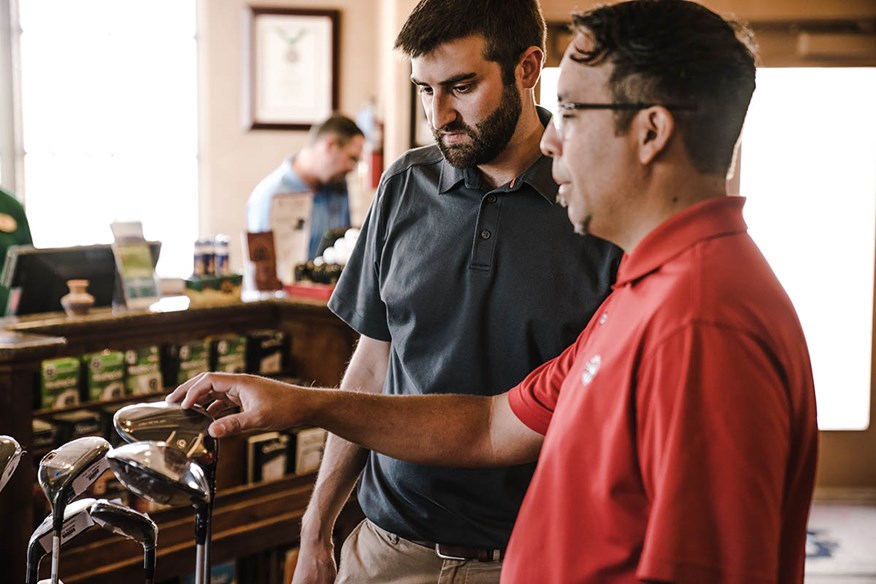
TaylorMade's most forgiving driver to date is the complete package.
Best for ball speed
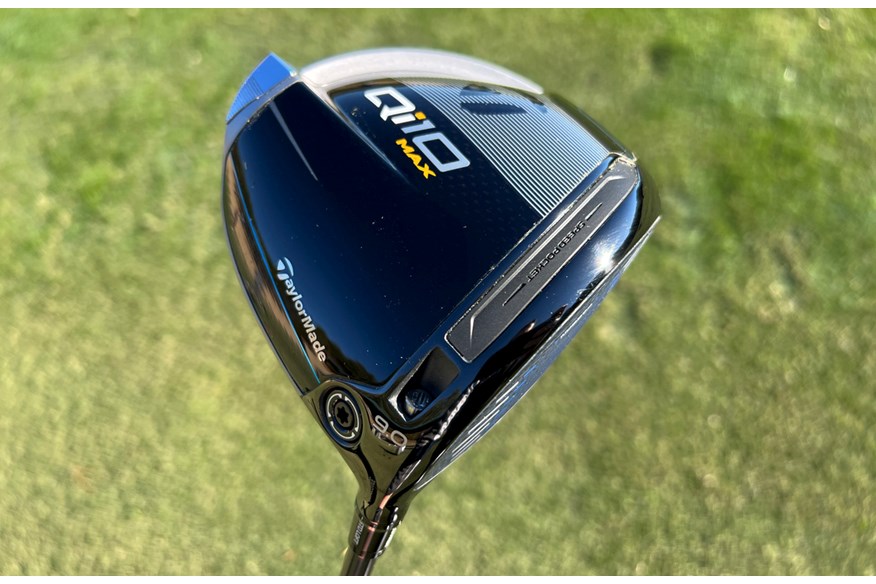

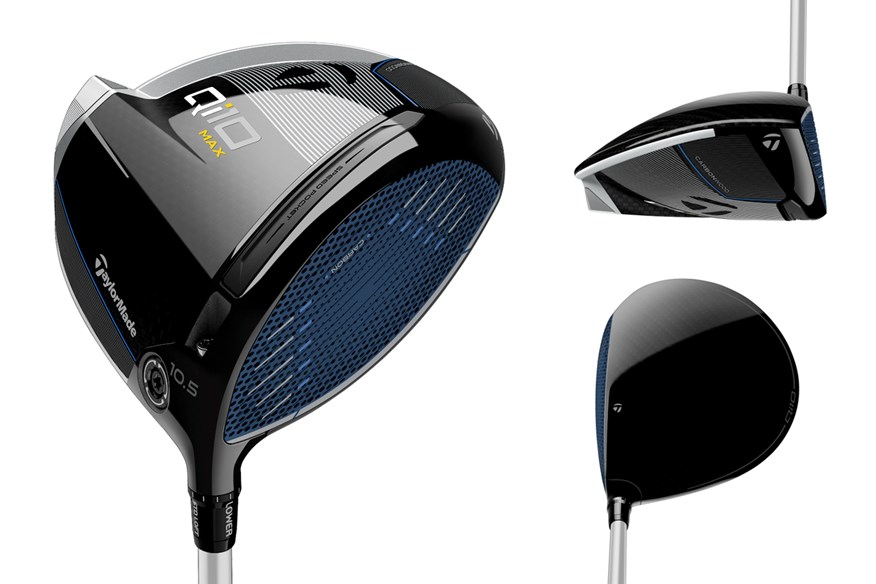
With a shot area of 325.7 yds2, the Max produced a dispersion inside my test average which hasn’t always been the case with TaylorMade drivers before. I also liked being able to dial down the loft a fraction as the footprint is so big and rear-weighted that the spin is a little higher than the competition. I didn’t feel though like I gave up any fairway finding confidence, despite being able to produce my fastest ball speeds of the year. If you’re a TaylorMade fan and you’ve been waiting for a forgiving driver option from them, 2025 is the time to fill your boots.
Read our full TaylorMade Qi10 Max driver review.
Pros
- Finally a super forgiving TaylorMade driver.
- The bigger profile is confidence inspiring at address.
- The extreme shape and weighting might mean you can use a little less loft to get more ball speed.
Cons
- I honestly don't see any.
| Lofts | 9° / 10.5° / 12° |
| Stock shafts | Speeder NX TCS (High Launch), Mitsubishi Diamana T+60 (Mid-Launch). |
| Stock grip | Golf Pride Z-Grip Plus 2 (52g). |
An AI-inspired slice buster with excellent all-round performance.
Best for most forgiving
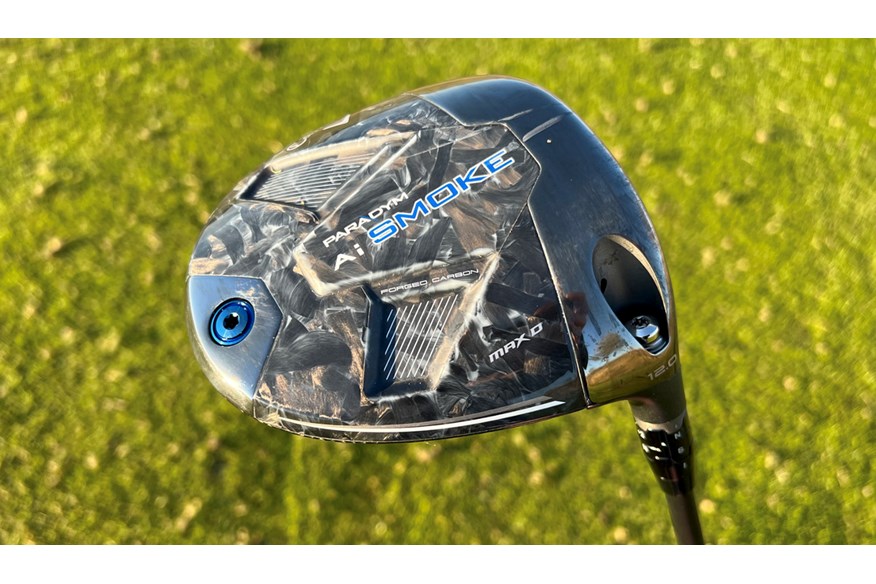

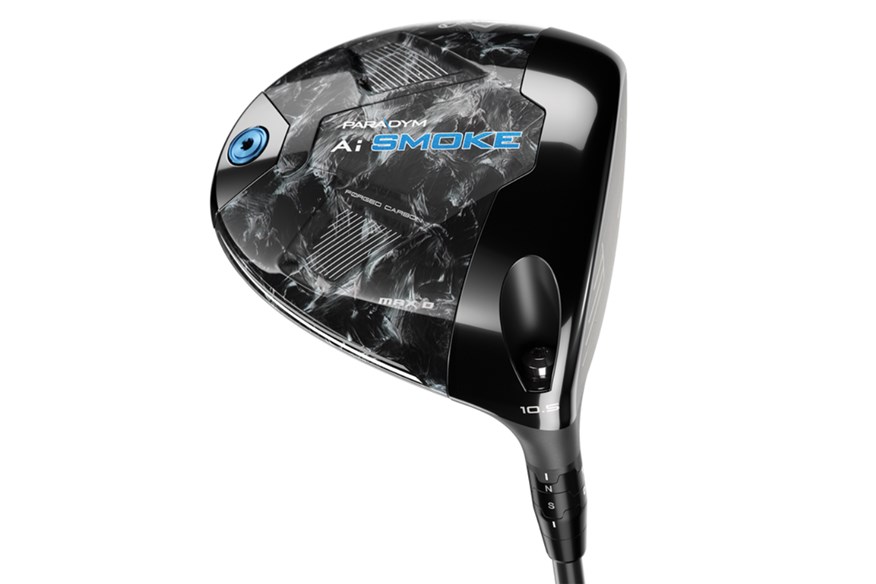
I really enjoyed hitting this model and my data with it wasn’t half bad either. With just a single yard between it and my longest driver (the PXG 0311 XF GEN6), there’s little to choose between them as I know the data could be reversed on another test day. What sticks out though, in a year when MOI is the hot topic, is the Max D managed to group shots into my smallest shot area (143 yds2). With an AI Smart face optimized for low heel-to-high-toe strikes, I feel like the Max D has mine and many other club golfers’ misses covered. A cracking draw bias driver option in 2025.
Read our full Callaway Paradym Ai-Smoke Max D driver review.
Pros
- The optimized Smart Face is tailored to those struggling with a slice.
- One of the longest and most forgiving draw drivers available.
- Some clever topline shaping means the face doesn't look massively closed at address.
- Powerful and stable through impact.
Cons
- Some may prefer less busy aesthetics.
| Lofts | 9° / 10.5° / 12° |
| Stock shafts | Project X Cypher 2.0 (high launch), Mitsubishi Tensei AV Blue (mid launch), Project X Denali Black (low launch). |
| Stock grip | Golf Pride Tour Velvet 360. |
A confidence-inspiring draw driver designed for the avid club golfer.
All in as far as draw drivers go the XL 2 did a job for me, it powered shots down the left side of the range at similar levels to the most draw-biased driver I’ve ever hit – the Ping G430 SFT. It also produced a ball speed and carry distance just above my test average. So long as a left tendency is the shot shape your game requires the XL 2 does what it says on the tin. Just be aware, it felt like shots were driven forward a little lower and less flighted than I would typically expect.
Read our full Cleveland Launcher XL2 Draw driver review.
Pros
- Lots of driver for the money.
- Packed with slice-busting tech.
- Great looking head shape.
Cons
- You won't see it played on Tour.
| Lofts | 9° / 10.5° / 12° |
| Stock shafts | Aldila Ascent PL 40. |
| Stock grip | <strong> </strong>Lamkin Crossline 360. |
Great driver for beginner and high-handicap golfers struggling with a slice.
Internal testing from Ping has shown golfers with slower swing speeds (less than 90 mph) experience gains in ball speed of 1.5 mph with higher launch angles of 1.5° when using the SFT model. Aside from strong performance credentials, the SFT is a fantastic-looking driver, free from exaggerated closed-face angles while still providing you with the confidence-inspiring feeling you require on the tee. One of our best draw drivers.
Read our full Ping G430 SFT driver review.
Pros
- Moveable draw-biased weights.
- Increased ball speeds for slower swings.
- Does not appear overly closed at the address.
Cons
- Severe slicers may prefer a more closed look.
| Lofts | 10.5° |
| Stock shafts | Alta CB Black, Ping Tour 2.0 Chrome, Ping Tour 2.0 Black, Alta Quick |
| Adjustable hosel | +/- 1.5° |
| Stock grips | Golf Pride Tour Velvet |
Best Fairway Woods for Beginners
A fairway wood isn’t a must-have in your golf bag, but it’s a good option to bridge the gap between your driver and your irons. Plus, many beginners find it easier to hit a fairway wood than a driver from the tee, so if you struggle with driver it can be a useful weapon to have in the bag.
For beginners, you want a fairway wood that’s easy to launch and forgiving. Here’s what we’d recommend:
Still one of the best blends of speed, power, and forgiveness you can buy.
Most forgiving fairway wood
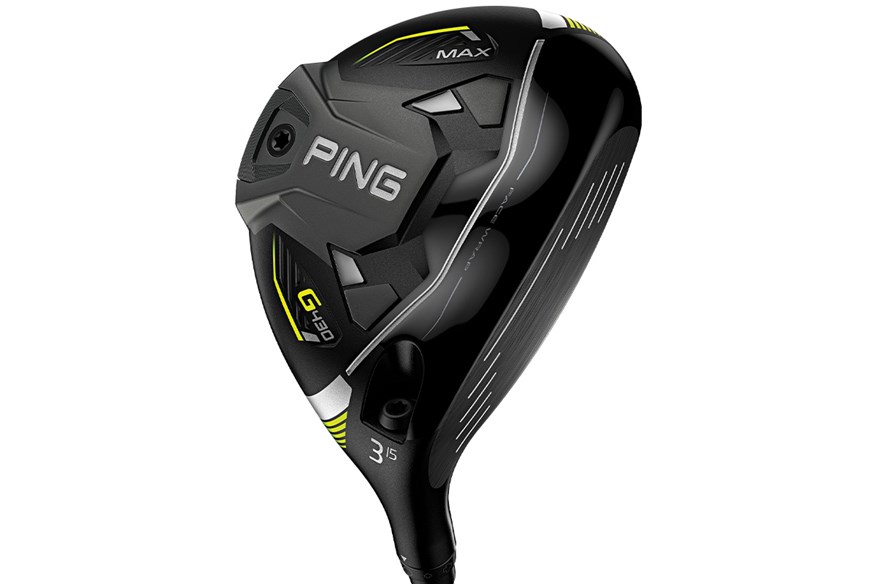

At 153.7mph the G430 Max posted the 4th fastest ball speed of our entire 24-model test, which is seriously impressive, but the reasons to include the model as a top performer grow exponentially when I throw into the ring a carry distance 4.3 yards further than our average, the smallest ball speed drop off (9 yds) and our tests 2nd smallest shot area (61% smaller than our test average).
Ping has a massive reputation for making forgiving products and once again our data highlights how this model flies incredibly high in the forgiveness stakes. Yes at $/£350 a pop you don’t want to buy too many but if you’re looking for a blend of speed, power, and forgiveness at any swing speed in 2025, write the G430 off at your peril.
Read our full Ping G430 Max fairway wood review.
Pros
- Seriously impressive all-round performance.
- There's an excellent range of shafts.
- Super easy to hit from a range of lies.
Cons
- Will be replaced in 2025.
| Lofts | 3 – 15° / 5 – 18° / 7 – 21° / 9 - 24° |
| Stock shafts | Ping Alta CB Black, Ping Tour 2.0 Chrome, Ping Tour 2.0 Black |
| Stock grip | Golf Pride Tour Velvet 360 |
A super playable fairway wood destined for great success in 2025.
2024 was the year that TaylorMade ditched their ‘draw biased’ family in a bid to make an ultimate forgiveness driver, fairway, and hybrid family, and the Qi10 Max across all three categories has performed in a way that its HD (High Draw) predecessor would always have struggled to compete with. By removing the draw bias/slicers family designation the Max family has suddenly become an option for everyone, and it’s so much better for it.
If you want to chase ball speed and distance that’s fine - TaylorMade’s Qi10 is all over that for you. But if you want a very forgiving and playable driver, fairway wood or hybrid, the Qi10 Max is the friend you wish you’d always had. This model puts a serious fairway wood choice on the table in a way that hasn’t been there before. For some, it won’t ever be the longest especially at the very highest speeds, as the wide-body head will create too much spin. Its strength though lies in no matter where shots hit the face it’s always going to be forgiving, and for reasonable – average swing speed players it will flight shots for optimum distance and stopping power.
I’ve been bowled over by the Qi10 Max this year, from a loft 1° weaker loft than our test spec this head produced a 2mph faster ball speed, and 4.3 yards more carry distance than our test averages, so the model is absolutely no slouch in terms of power. Where it comes into its own though is that speed and distance come with more launch angle, more spin, more shot height, and additional stopping power - all traits that will help regular golfers score better more often. My guess is the Max is going to be so successful this year that it's only a matter of time before other brands start retargeting their draw-biased families to ‘ultimate forgiveness’ golfers too. Watch this space.
Read our full TaylorMade Qi10 Max fairway wood review.
Pros
- The wide shallow profile is really confidence-inspiring at address.
- The high-launch ball flight will maximize carry distance at more average speeds.
- I love the slightly weaker lofts that are a doddle to launch from the turf.
Cons
- So long as you can justify the price there's nothing here not to like.
| Lofts | 3W – 16° / 5W – 19° / 7W - 22° |
| Stock shafts | High -Fujikura Speeder NX TCS (50 S/R/A, 40L) |
| Stock grip | Golf Pride Z-Grip Plus 2 (52g) |
Best Hybrids for Beginner Golfers
Many beginners find hybrid golf clubs easier to hit than fairway woods or irons. Finding out the best hybrids in golf can be tricky as, like irons, there are loads of options for different skill levels of golfers.
A high-flying and confidence-inspiring hybrid for average-speed players.
Best for launch-ability
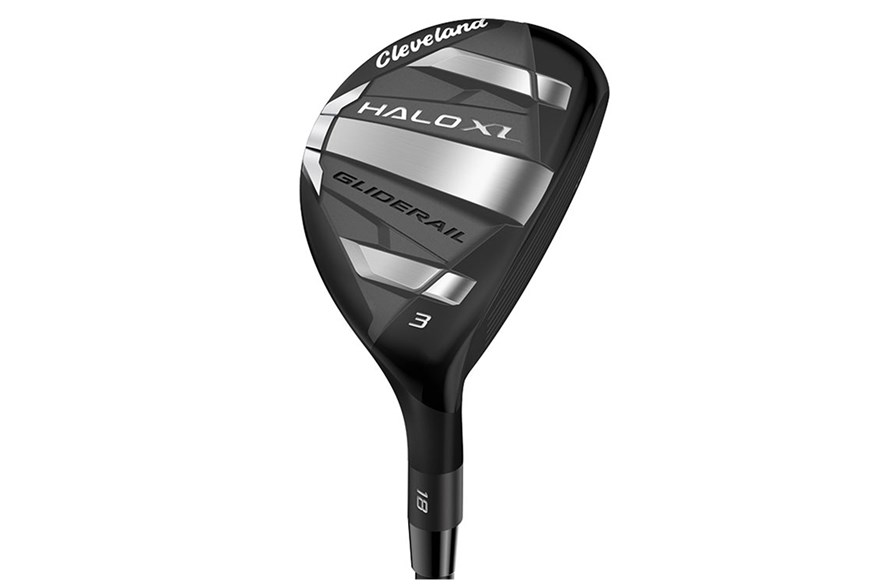

We really like the confidence-inspiring wider head and the lively but stable feel of the newly installed Mitsubishi Tensei Blue shaft. The railed sole is also really well equipped to cut through gnarly lies, and power shots out of trouble back into play.
From a 1° weaker set-up than our test loft, the Halo span shots 1,132 rpm above our test average, which meant shots flew 3.6 yards higher and hit the green at a 4.6° steeper angle; traits that will help slightly more average swing speed players not only flights shots for maximum carry, but also stop them quicker.
Throw in tighter carry distance drop-off and shot area averages and how the Halo comes in for a little bit less than most of its competitors and I believe this club golfer-focused model is well worth a spot on any shortlist of best-performing hybrids in 2025.
Pros
- Confidence-inspiring shape.
- High launching and high spinning.
- Good level of forgiveness.
- Easy to hit from tricky lies.
Cons
- Better options for those seeking pure distance.
| Lofts | 3H - 17º / 4H - 20º / 5H - 24º |
| Stock shafts | Mitsubishi Tensei AV Raw Blue |
Those seeking ultimate forgiveness need this hybrid on their radar.
Most forgivng hybrid
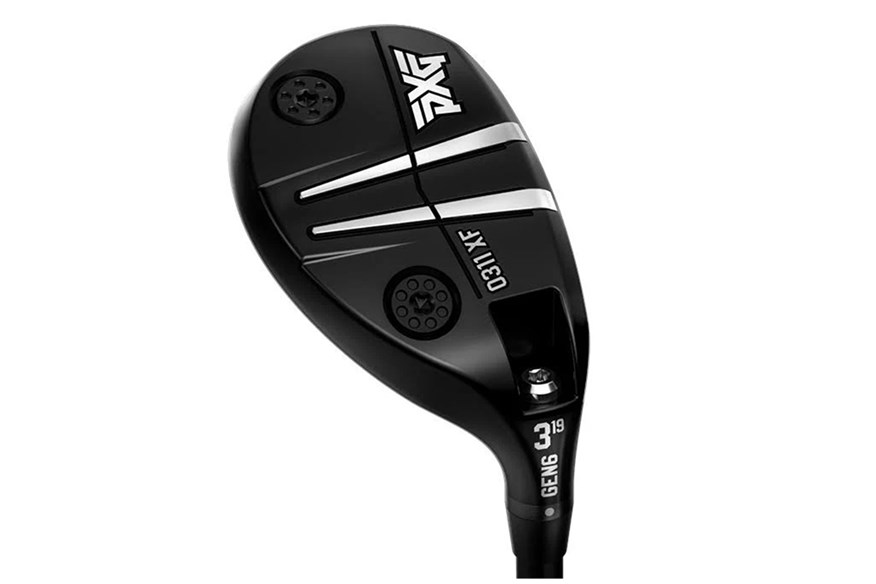

PXG fans may also want to check out our PXG 0311 Black Ops hybrid review.
Pros
- One of the most forgiving hybrids out there.
- PXG has an outstanding range of stock shaft options.
- Striking looks in the eyes of most.
Cons
- Ball speed and distance are the compromise.
| Lofts | 19° / 22° / 25° / 28° / 31° |
| Stock shafts | Multiple custom-build options |
Best Irons for Beginner Golfers
When it comes to irons, beginner golfers will typically benefit from clubs that have bigger heads and wider soles, which help you get the ball in the air easier and are less punishing when you make contact on different parts of the clubface.
Perhaps the fastest and longest high-handicap irons in 2025.
Our test pro really enjoyed hitting this simple cast cavity back. The heads are a decent shape and size and unlike some previous Callaway game improver irons the top edge width does not completely dominate the look. The model produced the fastest ball speed of the entire category, an impressive 2.8mph or 2.2% faster than our test average.
While the model launched a fraction lower than our test average it managed to pull off the modern-day magic trick of spinning at good levels while peaking out higher and hitting the green at a steeper decent angle than average, so this would be a really playable iron on the golf course as shots will hit the green and stop quickly.
Throw in how the HL was the second longest hitting iron in the category, plus at 6 yards it produced our joint smallest (tied with the Ram Wizard) carry distance drop-off and the 2nd smallest shot area and it takes no further explaining as to why the HL is among my three top-performing High-Handicap Irons of 2025.
Read our full Callaway Paradym Ai-Smoke HL irons review.
Pros
- More golfers really should give HL irons a try.
- The lower profile head is super easy to launch.
- Additional loft will help you stop shots on the dancefloor.
Cons
- If you are the target golfer, I'm genuinely struggling to find a fault.
| Availability | 5-SW |
| Stock shafts | True Temper Elevate 85/95 (s), Project X Cypher 2.0 70/60/50 (Stiff, Regular, Light), Mitsubishi Tensei Blue White (40 – Light), Mitsubishi Eldio (Womens) |
| 7-iron loft | 30° |
A super friendly option to make the game a good bit easier.
In the past the Halo has been super easy to launch at very average club golfer speeds, however this time around thanks to a slightly stronger 7-iron loft (it’s 0.5° stronger than the previous model) I feel you’ll need nothing less than average levels of speed to get the very best out of this model. Our test pros data highlights how the Halo launched and flew lower, with less spin and a shallower descent angle than our test averages, so just be warned there might be slightly more friendly models out there if you don’t have speed in abundance.
The Halo won’t win any beauty contests, especially not now as this generation comes with the addition of unnecessary full-face grooves, but this model as it always has will help a mishit shot carry a lake, bunker, or hazard, which will aid your enjoyment of the game, cut down on lost balls and shave strokes from your game.
Read our full Cleveland Halo XL Full Face irons review.
Pros
- Incredibly forgiving.
- They'll make golf easier.
- Perfect for new golfers.
Cons
- You need to be comfortable with the looks.
| Availability | 4-SW |
| Stock shafts | KBS Tour Lite (s) |
| 7-iron loft | 29° |
A super impressive iron offering maximum forgiveness and effortless launch.
Best for high launch
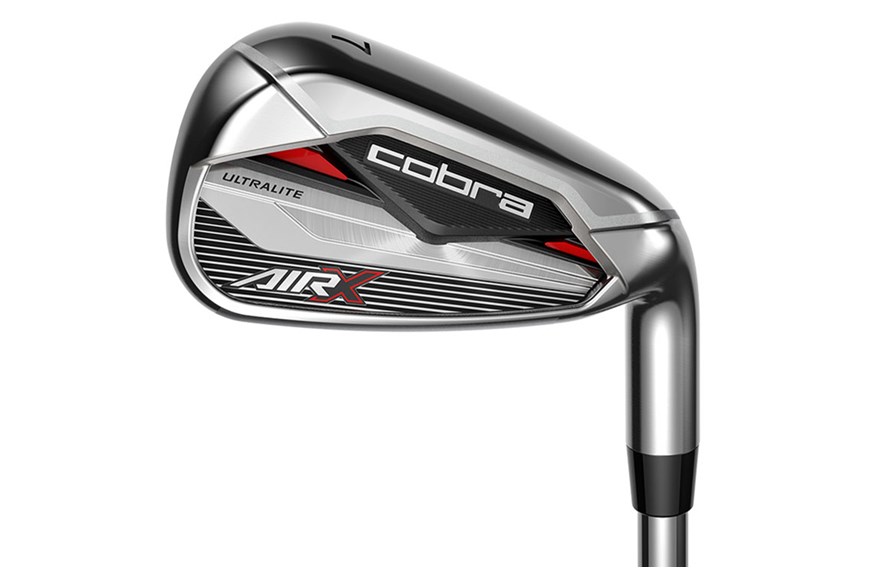

The Cobra Air X is very much a modern high handicap/moderate speed player iron set-up. The lofts are slightly weaker, the weights are slightly lighter, and the shafts are slightly higher launch, all of which make the set more playable for mere mortals at average speeds. And because higher-handicap players are often less likely to notice the difference, slightly less costly tech built-in means prices are super competitive too.
The Air-X is a brilliant fit for average-speed players. Those who are less worried about playing the very latest tech-laden equipment, and are happy just to put a decent-looking and feeling iron into play that’s going to do their game no harm. Ultimately the X’s target golfer should compare the model to Cobra’s T-Rail hybrid iron, as undoubtedly there will be more forgiveness, playability, and launch on offer from the wider body hybrid.
Read our full Cobra Air-X iron review.
Pros
- One of the most forgiving irons out there.
- Lightweight and easy to launch.
- Competitively priced.
Cons
- Less tech than some Cobra models.
| Availability | 5-SW |
| Stock shafts | FST ULTRALITE (s); ULTRALITE (g) |
| 7-iron loft | 31.5° |
Best Golf Wedges for Beginners
Many beginner golfers will be fine using the wedge(s) that come as part of your iron set. If you want to add a sand wedge or lob wedge, as with irons, you will want a larger head and thicker sole. This would be our top pick:
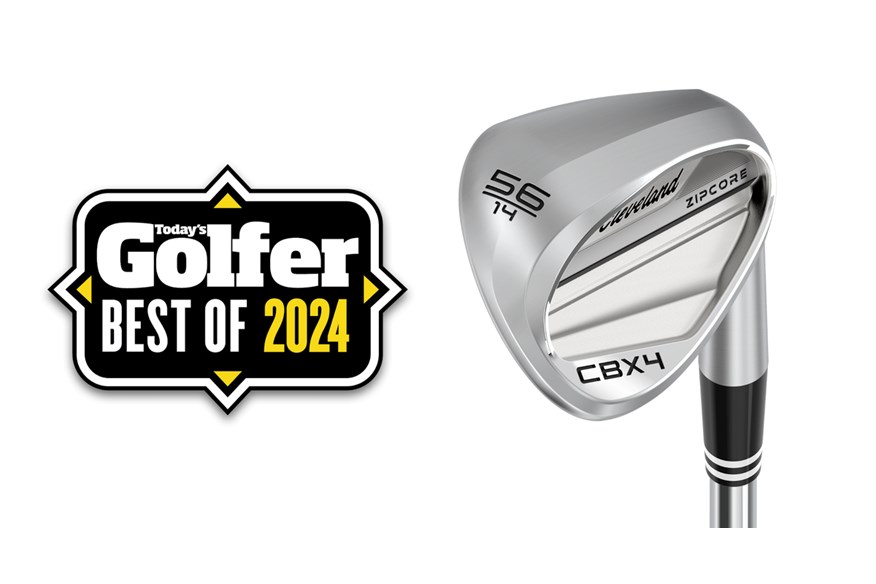

The CBX 4 was brand new for 2024 and my thinking absolutely hasn’t changed from its predecessor. We don’t suddenly become tour pros’ when pulling a wedge from the bag. So, if you’re looking for maximum wedge efficiency, forgiveness, and consistency you simply have to ask yourself if you can accept cavity back wedges in 2025. If you can the CBX4 is the best money can buy.
As far as test data goes the CBX 4 is a top performer for many reasons. Yes, the model’s beautifully CNC-milled and laser-etched face produced 1.7% more backspin than our test average but much more importantly that spin was consistent. The drop-off between our test pro’s highest and lowest spinning shots was 949 RPM, that is 45.4% tighter than our test average and 3rd best across the entire 20 different 52° wedges we hit this year. Throw in a carry distance drop-off of 9 yards (that’s the longest to shortest shots) from 100 yards out and a shot area smaller than our test average and you soon realize this is a top-performing wedge for numbers.
The CBX’s beauty doesn’t just lie in numbers though. This is a seriously good-looking and feeling wedge, it’s beautifully finished and now in its fourth generation, it also feels like the model has blossomed and come of age too. My thinking is many golfers at address won’t be able to spot the differences between its slightly larger head and the tour-level Cleveland RTX 6. The icing on the cake apart from the slightly lower price, is the ton of loft choices, but also the lack of sole grind or bounce options as Cleveland just make this model in the specs best suited to its target audience. A move that takes a ton of hassle and confusion out of buying new wedges.
Read our full Cleveland CBX 4 wedge review.
Pros
- Extremely forgiving
- Brilliant for club golfers who use cavity back irons
- Sole grind and bounce choices are simplified by loft
Cons
- Head may be a little large for some
Best Putters for Beginners
When it comes to putters, there aren’t specific models that are tailored towards beginners, so just try a few different styles and see what you like best. That said, more and more golfers of all abilities are moving towards mallet-style putters as they tend to be more stable and forgiving than blade putters, so a mallet might be your best bet if your putting needs some work.
Some putters work best for golfers who take the putter head straight back and through (these are called ‘face balanced’) while others suit a more arcing putter stroke (these have more ‘toe hang’, which refers to how much the toe points towards the ground when you balance the putter on your finger parallel to the ground). The best way to find out what sort of stroke you have is a putter fitting, which is something often overlooked by golfers of all levels, not just beginners.
A super stable putter for those who need as much help as they can get.
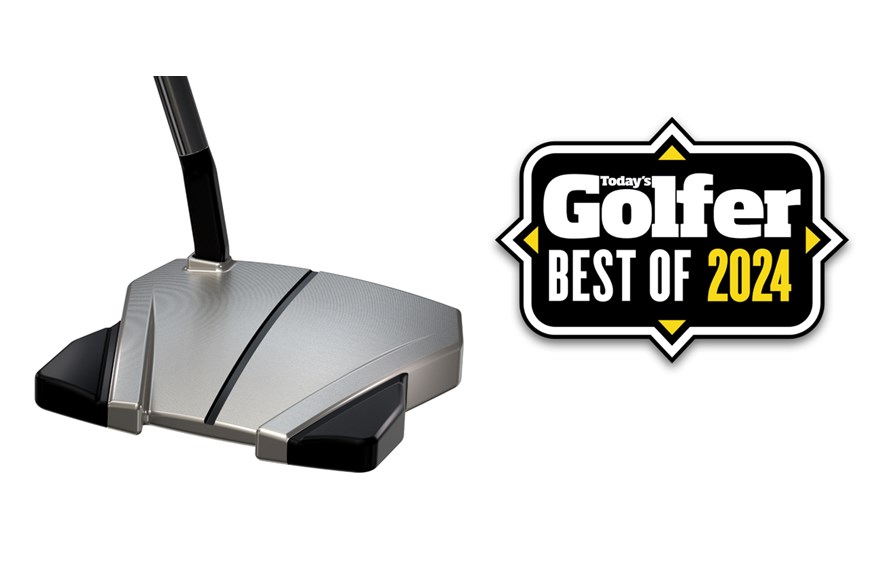

Back when rumors swirled in 2014 that GO Daddy billionaire Bob Parsons was about to enter the golf market, many people thought PXG – like countless companies before them – were only ever going to be a flash in the pan. Ten years on, not only is the company going from strength to strength, it’s changed the market too. Back before PXG, nobody made hollow body irons – they just weren’t a thing. A decade later, every major brand now makes hollow body irons and most make more than just one.
It makes perfect sense that after seeing such success with hollow-body iron tech, which allows engineers to create a blade-type look with the playability of a cavity back, the same idea be transferred over to making forgiving hollow-body putters. If stability and forgiveness are your aim in 2025 you simply have to check out PXG’s Battle Ready 2 Apache, it's a beast.
Yes, the model has a big head, but it’s got a very sleek shape, without too many angles to confuse the eye. It’s available in four different hosel options, which allows golfers to choose how much toe hang their putter has, which simply isn’t an option from most mainstream putter makers.
I love the bold single sightline, it’s the height of simplicity, I also really like how the black back wings are cleverly disguised to hide their size and shape.
The cherry on top though has to be the Apache’s massive MOI. While many putter makers don’t like publishing MOI data for their flat sticks, the Apache comes in at 7717g cm2. That’s 35.4% higher than TaylorMade’s legendary Spider Tour and 27.5% higher than the same brand's bigger footprint counter-balanced Spider S. All of which should be music to the ears of golfers who want a stable putter.
Read our full PXG Battle Ready II Apache Putter review.
Pros
- Incredibly stable
- Lots of hosel options to get toe hang to suit your stroke
- Clean and simple design
Cons
- Large head size won't suit everyone's eye
A fantastic budget blade putter.
Best budget blade putter
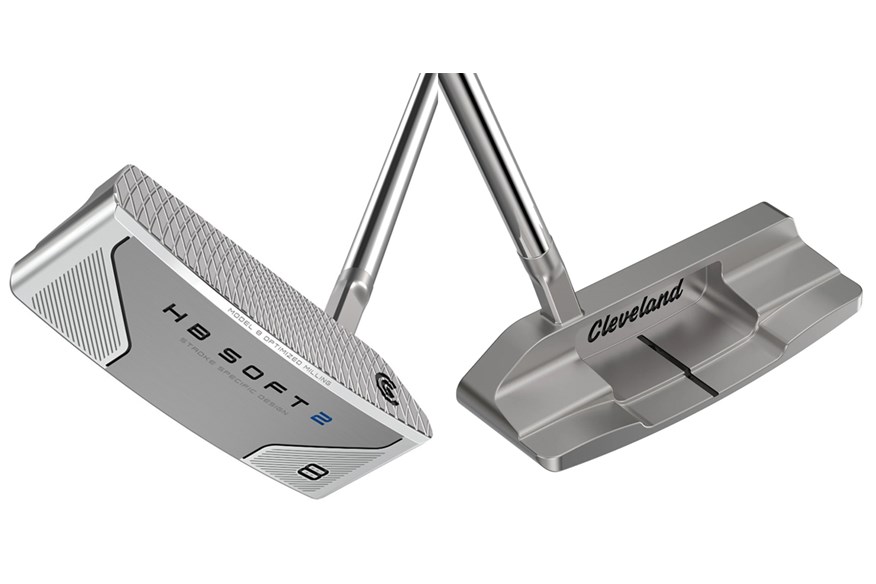

Budget blade putters used to be common five years ago but now there’s a real lack of good, inexpensive options out there.
Some will dismiss the Cleveland HB Soft 2 #8 (which comes with either a center shaft or slant neck option) as just another toe and heel-weight blade that they’ve seen a million and one times before. But in the current market, this putter comes in at £119 which is seriously good value as it is beautifully made.
Having worked in club design, I can appreciate a lot of thought and effort has gone into making this whole family (there are nine different models in total) really attractive, functional, and great feeling, which I believe Cleveland deserves serious applause for.
If you’re looking for a decent quality putter that will stand the test of time - on a budget in 2025 - you simply have to check out the Cleveland HB Soft 2. They look great, and I swear in a blind test many club golfers will struggle to feel a difference between the HB Soft and lots of models that cost three or four times as much.
Check out the best blade putters available.
Pros
- Much cheaper than most of the best blade putters
- Looks fantastic
- Feels about as good as any blade putter
Cons
- Quite a wide grip for a blade putter
Mallet putters don't get much better than this.
Best mallet putter
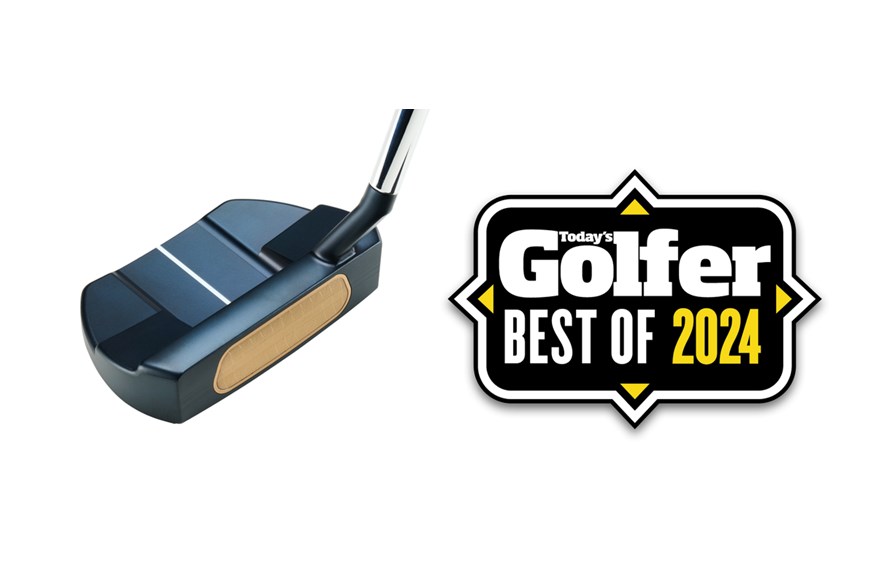

Odyssey are brilliant at sticking with tour- and consumer-proven putter head shapes and building in whatever new tech they come up with. The Three T shape has been an award winner here at TG before and I still love the idea of the flat/square back running parallel to the face which makes this model super attractive within the mallet category. Where mallet putters have traditionally had more flowing and rounded head shapes, especially to the rear, the Three T is blunt and straight, which I find really helps highlight where the face is pointing.
You will need to love and appreciate the beauty of CNC Milled putters to buy into the Three T as they really don’t come cheap. But having been to the global launch of the whole Ai family at PGA Frisco in Texas, I can confidently say putter designs don’t come any more complex. The work and effort Odyssey have put into developing their AI face story is second to none and while lots of clubs golfers will likely struggle to ever know if the face tech helps putts finish 21% closer to the hole as the brand claims, over the course of a season I’d happily wager a month's mortgage payment that most golfers will see an improvement in their 3-putt percentage using the tech.
With significant amounts of toe hang, the Three T isn’t a model for all strokes. You will need a decent amount of arc, rotation, or like feeling the putter release through impact to deploy this model at maximum efficiency.
I really like the slightly firmer feel and faster ball speed off the titanium insert of the Ai-One Milled series as I use a softer, lower-compression golf ball. To me, the feel and roll are better for all year-round performance in the UK but I completely appreciate golfers who play on seriously quick greens might like teaming the softer White Hot insert of the standard (non-CNC Milled) Ai One putter family with a firmer compression golf ball.
If a beautifully made mallet putter is on your shopping list in 2025, I’d seriously recommend having the Three T right near the top of the models you want to try.
Check out the best mallet putters available or read our full review of the Odyssey Ai-One Milled Three T Putter.
Pros
- Beautiful to look at
- Packed with technology
- Offers great distance control
Cons
- One of the most expensive putters out there
A great value-for-money MOI option.
Best budget MOI putter
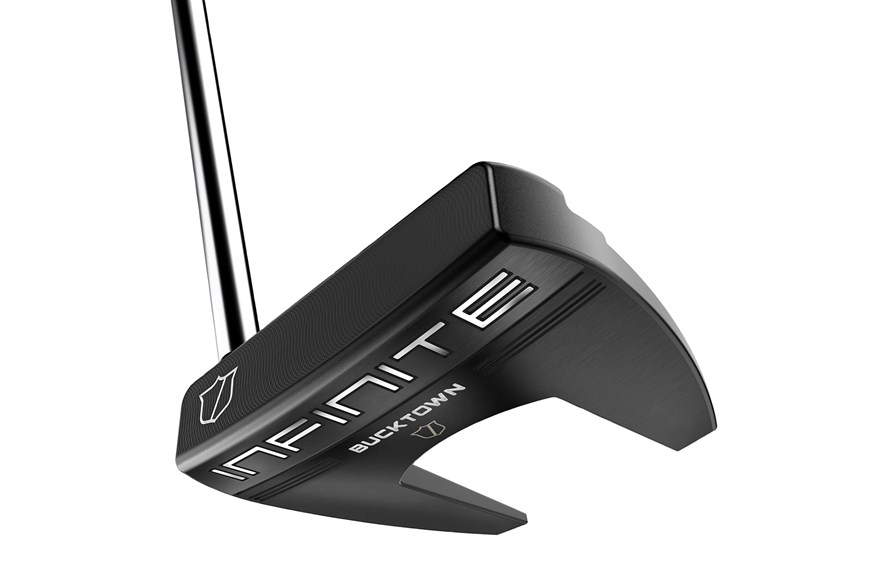

Good value-for-money putters are getting harder to find. We always like to highlight at least one such buy in each category, as we know not everyone wants to blow hundreds on a new putter.
Wilson’s Infinite family has stood out for a few years now in the budget field, and the whole range had been relaunched for 2024.
You don’t get hosel choices or changeable weight set-ups, nor a milled head or soft face insert, but the Bucktown is still a strong MOI putter for good money.
If you’re drawn to it, make sure the face-balanced set-up suits you: it typically works best for straighter strokes.
The Infinite family runs to multiple models, so should you find yourself wanting a more traditionally shaped blade or mallet, Wilson have other decent options, too.
Pros
- Fantastic value for money
- Great for straight putting strokes
- Multiple models to choose from
Cons
- Less premium build
Hard to beat for alignment and stability.
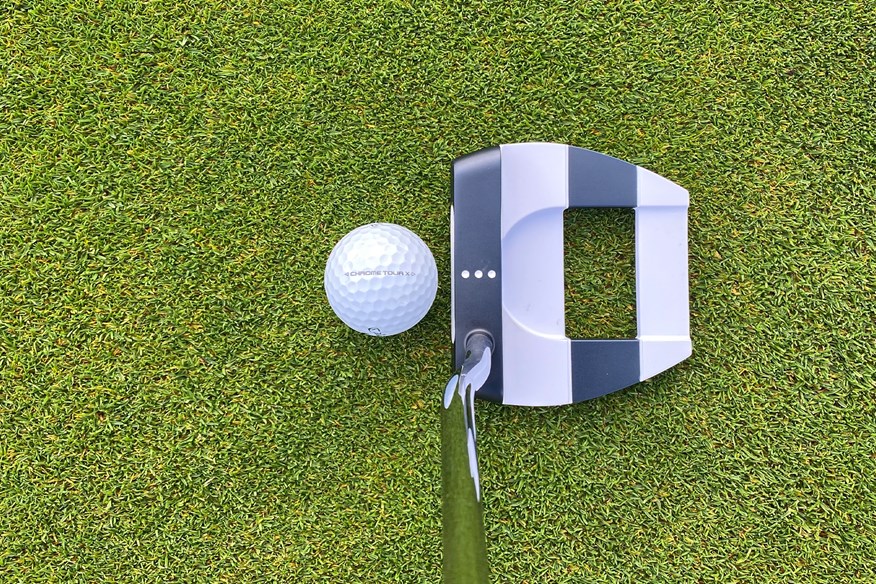

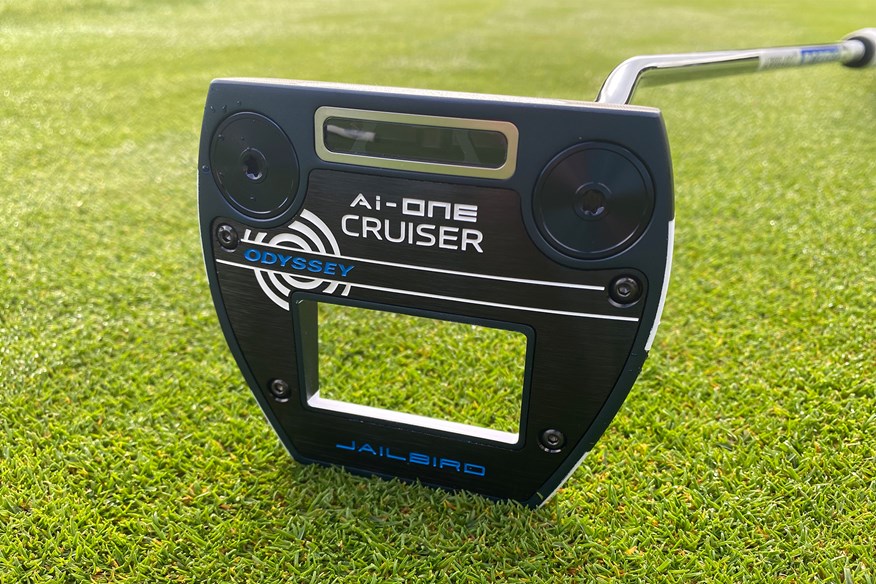
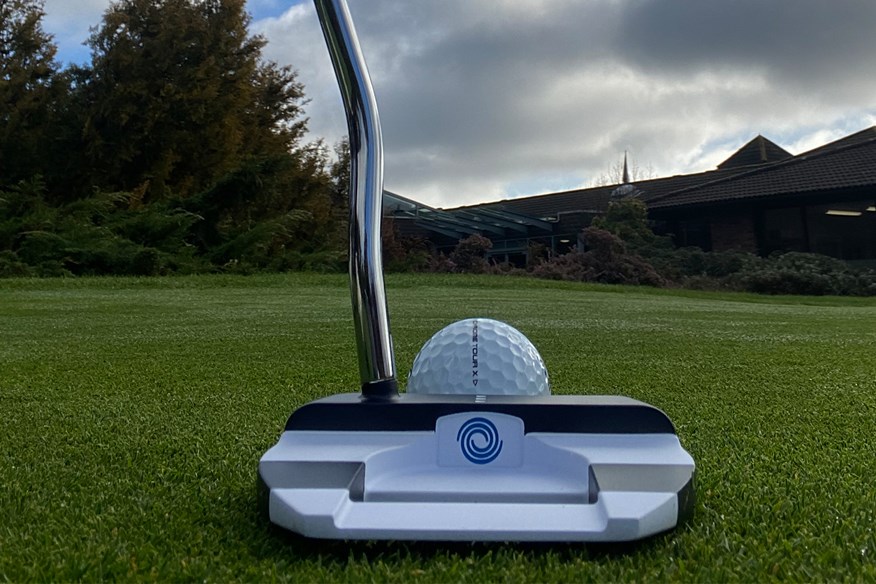
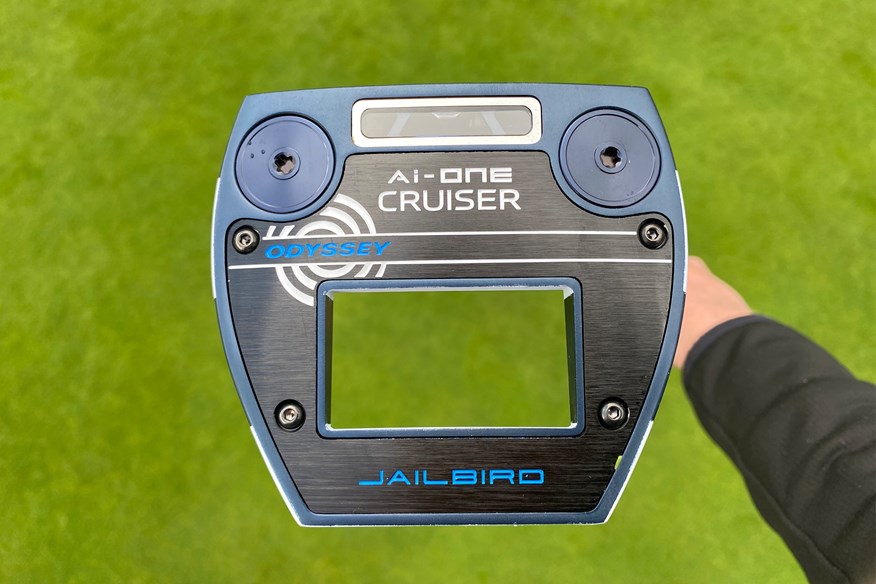
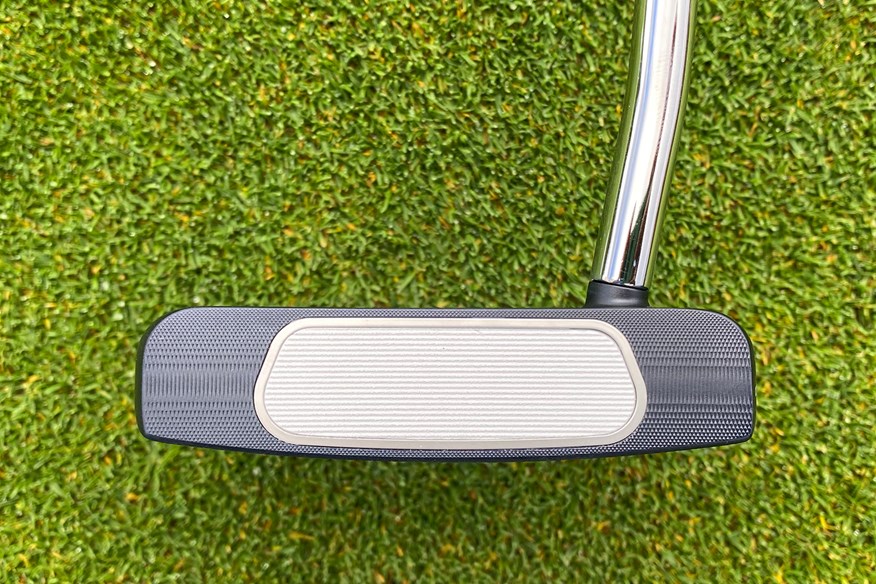
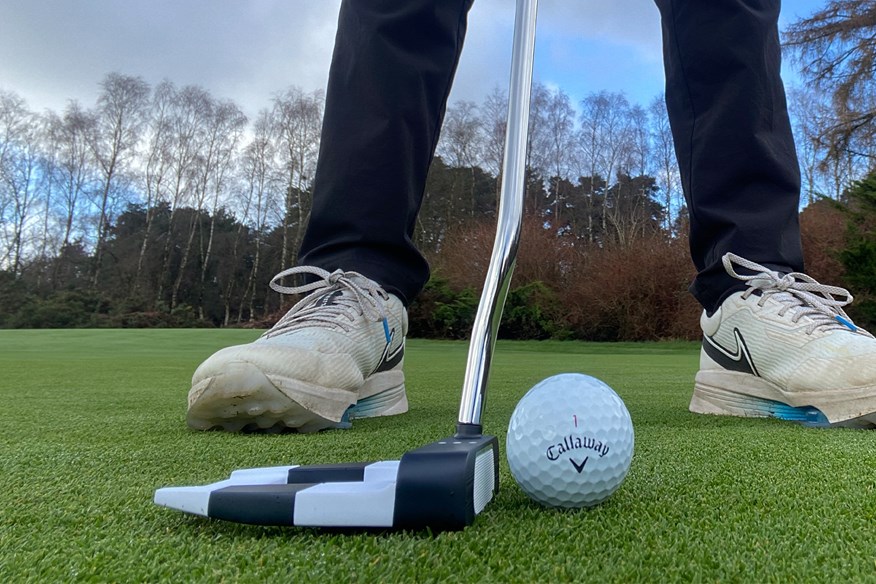
Golfers went crazy for the original Jailbird after the 2023 US Open, where Rickie Fowler shot the low opening round and Wyndham Clark went on to win using the same nine-year-old model.
Unsurprisingly, Odyssey have reintroduced it in their new 2024 Ai-One family, a move that should reap massive rewards.
We’d love to say we noticed the AI face tech helping off-centre putts finish closer to the hole, but that’s incredibly hard to prove.
I have to put my hand up and say despite the ‘21% closer’ claims of the AI face, it didn’t stop me three-putting the first hole I played with my sample. But such a rude start didn’t put me off loving this model.
It’s not rocket science but the navy, white, navy, white finish of the Jailbird and having the back edge of the head running parallel to the face, rather than being curved like a mallet, is just like having alignment help on steroids. If you can’t aim this model squarely at your target line, there really isn’t a putter out there that can help.
Admittedly this model is a little smaller than the counter-balanced 38” Jailbird model Rickie Fowler uses, but I believe for many that will be a plus as big MOI heads adorned with this sort of paint job are really in your face. I’d love to say I’ve noticed the AI face tech helping off-centre putts finish closer to the hole but in reality that’s a feat that’s incredibly hard to prove definitively.
I do however love the firm but soft feel of the insert, the roll across the green's surface is superb, and the pistol-shaped grip is a better shape than what the company have made for some time. If it’s alignment and stability help you want in 2025, the Jailbird has all the answers.
Check out the best Odyssey putters or read our full Odyssey Ai-One Jailbird Mini Putter review.
Pros
- Great for alignment
- Really nice pistol grip
- Lovely feel
Cons
- Busy design won't suit everyone
The classic MOI putter that changed the game.
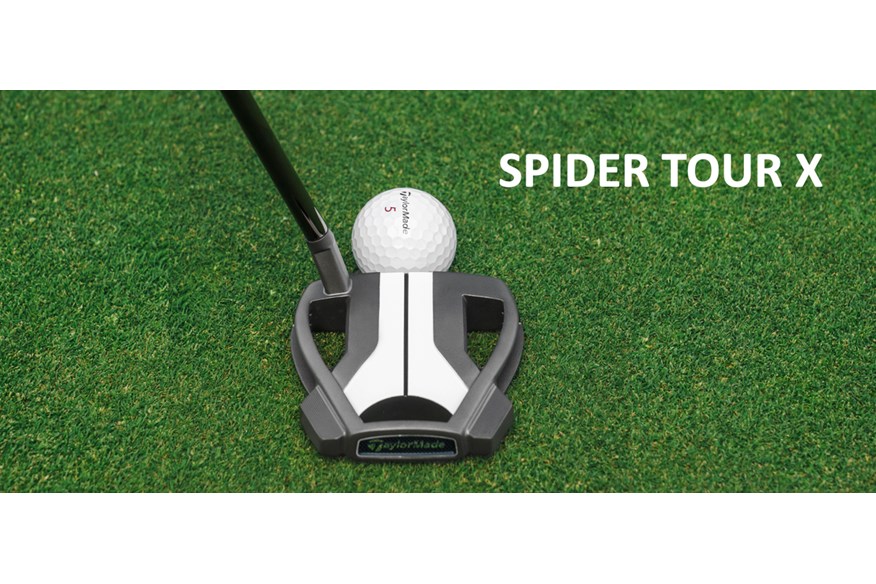

Spider putters have played a huge role in convincing many tour pros to ditch their blade putters for more forgiving MOI and mallet-style models over the last decade. This and the previous X models alone can lay claim to helping Rory McIlroy have his best putting season ever and breaking many a scoring record.
TaylorMade relaunched the Tour X at the back end of 2023, and this beautifully put-together model is an excellent option within the MOI arena. Thanks to not having the deepest centre of gravity location and quite a bit of toe hang, the model is often a really good fit for golfers looking to transition from toe hang blades into more forgiving MOI-style putters.
This head shape is a proven winner, and from my experience while testing it’s a reliable and consistent performer on the dancefloor. I really like the flowing body lines whereas some of the competition adopt much sharper edges and more angular approaches. If there’s such a thing as a classic MOI putter, the Spider Tour X is it.
In previous generations, the X has been an award winner here at TG, and I reckon the new black shaft, refined sound and feel, which is more muted than the original, and more durable gunmetal PVD finish which won’t chip like previous painted models, elevate the X onto the MOI putter podium once again.
Check out the best TaylorMade putters or read our full TaylorMade Spider Tour X Putter review.
Pros
- Tour-proven over many years
- Pleasing design
- Good forgiveness and stability
Cons
- You can't scoop your ball up with it
Best Beginner Golf Clubs: Buying Guide
What golf clubs do beginners need?
The rules of golf allow you to carry a maximum of 14 golf clubs, but there’s no need to get that many straight away as a beginner. If you’d like to get used to the game before committing too much money, you could easily make do with a half set while you test the waters and develop your skills. You’ll definitely need a putter, probably a driver or 3-wood, and at least a few irons, ideally including at least one wedge.
Obviously, if you’re confident you’re going to stick with the game or you’re not worried about money, buying a full set means you’ll have everything you need for at least the early stages of your golf journey.
What makes a good beginner golf club?
Now we’ve established what type of golf clubs you might want, let’s look at what makes a good beginner golf club.
Golf isn’t easy as a beginner, so you want equipment that helps you out as much as possible. With golf clubs, that means forgiving and easy to hit.
How do I choose golf clubs for my height?
Taller golfers will generally benefit from clubs that are longer and have a more upright lie angle, with shorter golfers needing shorter clubs with flatter lie angles, but there are plenty of exceptions to that rule.
A good custom fitting is the best way to ensure you’re getting golf clubs that are the right length to suit your height. A custom fitter will measure things like your wrist-to-floor measurement and, perhaps more importantly, the strike location and ‘dynamic lie angle’ when you hit shots. That dynamic lie angle refers to whether the bottom of the club is flat at impact, or whether the heel or toe of the club are higher than the other. Strike location is whether you’re hitting shots high or low on the face, and towards the toe or heel.
Custom fitting
Though we’ve tried to offer some useful guidance on the type of clubs you should look for, there’s no substitute for a good custom fitting. A good fitter will be able to determine what length and flex shaft will work best for you, look at your impact to see what clubs will work best, and let you test different models head-to-head to see what works and feels best.
Some fittings can almost be part golf lesson, as the fitter can explain what’s causing certain shot patterns (a big slice or thinned irons, for example), enabling you to make positive changes to your swing as well as finding equipment to help.
Many beginner golfers say they’re not good or consistent enough to get custom fitted, and whilst it’s true that we wouldn’t recommend booking a custom fitting for your first time ever hitting a golf ball, if you’re about to spend a good chunk of money on clubs, a fitting is definitely worthwhile. Don’t feel embarrassed about hitting bad shots in front of a custom fitter; they’ve seen it all before, countless times, and are only there to help, not judge you.
A good fitting also shouldn’t feel like you’re being pushed into buying anything. Some fittings are free, including those at big-name retailers, while smaller, custom fitting specialists sometimes charge a small amount for the fitting. This fee is often taken off the purchase price if you do go on to order clubs, and in our experience it’s worth the money anyway for the level of knowledge and care you get, plus the added impartiality and chance to test multiple brands.
If you have a custom fitting and don’t order clubs on the day, make sure you’re given the details of what has been recommended to you. This enables you to order the right thing at a later date.
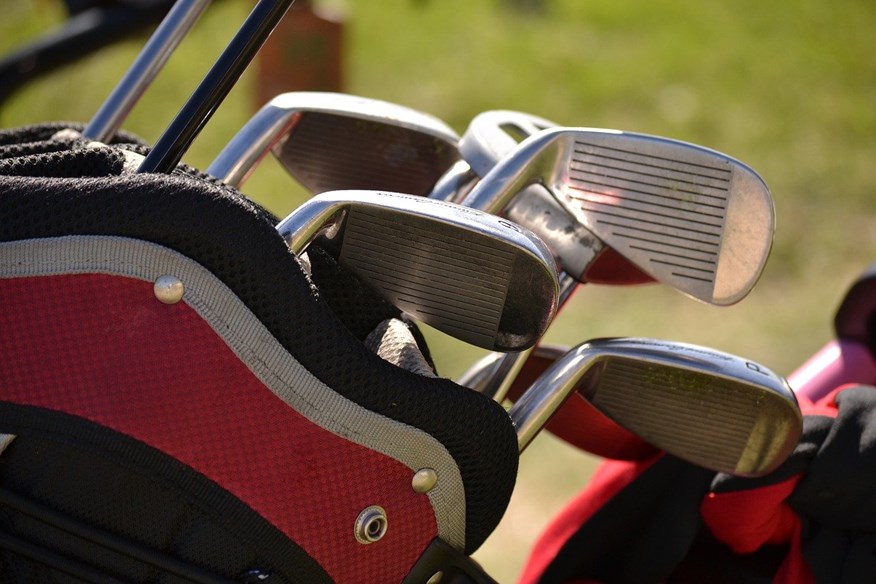
Price
Golf can be an expensive sport to get into, with equipment, clothing, green fees and/or membership, and more. If you’d like to keep the initial outlay under control, there’s absolutely no need to go and buy 14 clubs of the latest and greatest clubs, particularly if you’re not sure whether golf will be for you or you’re a total beginner and don’t yet know what clubs you’ll want in a few months’ time.
That said, everyone’s budget is different. If you want to spend thousands on the best gear and have the money to do so, then go for it! But, as a beginner, you really won’t notice much difference between a set that cost a few hundred versus a set that cost ten times as much.
For most people, it’s a much better idea to spend less on the clubs and invest the money in lessons from a good golf coach. You’ll also want to have money left over for green fees or a golf club membership so you can actually get out and develop your skills with your new clubs.
Buying used golf clubs is also a good option, as the prices will be much lower, and if you pay a fair price you will be able to resell them without losing much if you decide the clubs (or golf) aren’t right for you. You can get the best prices by buying direct from other people on things like Facebook marketplace or eBay, but as a beginner it can be hard to recognize what’s a good deal and what isn’t. If you have friends who are experienced golfers, get them to help you pick suitable used clubs at a good price.
Specialist second-hand retailers like Golfbidder may be slightly more expensive than buying direct from an individual but they offer a much better safety net. All of their clubs come with a 12-month warranty and a 7-day trial period which lets you test the clubs and return for a full refund if you’re not happy with them for any reason.
Brands
Most of the leading brands offer a wide variety of models, from clubs aimed at pros and elite players right through to those aimed at beginners and high handicappers. The biggest brands are Callaway, TaylorMade, Ping, and Titleist, but there are many more companies making fantastic equipment.
That’s why our club reviews feature a ‘forgiveness rating’ and or ‘handicap range’, to help you see whether the model in question is likely to be suitable for your level. As mentioned, more forgiveness is your friend as a beginner golfer. If you’re unsure, drop us a message via email or on social media, speak to the pro at your local club, ask in a store, or get a custom fitting.
